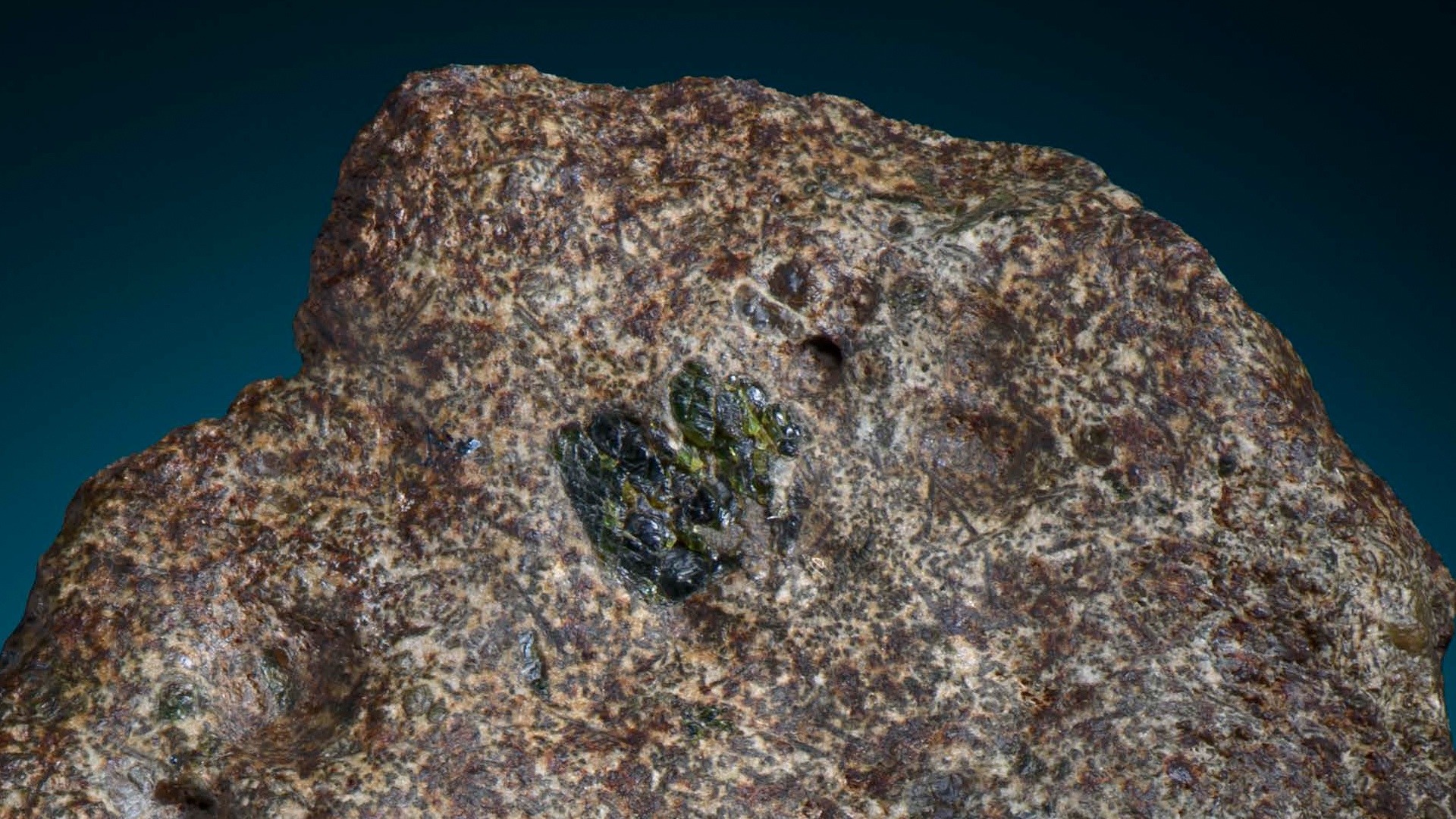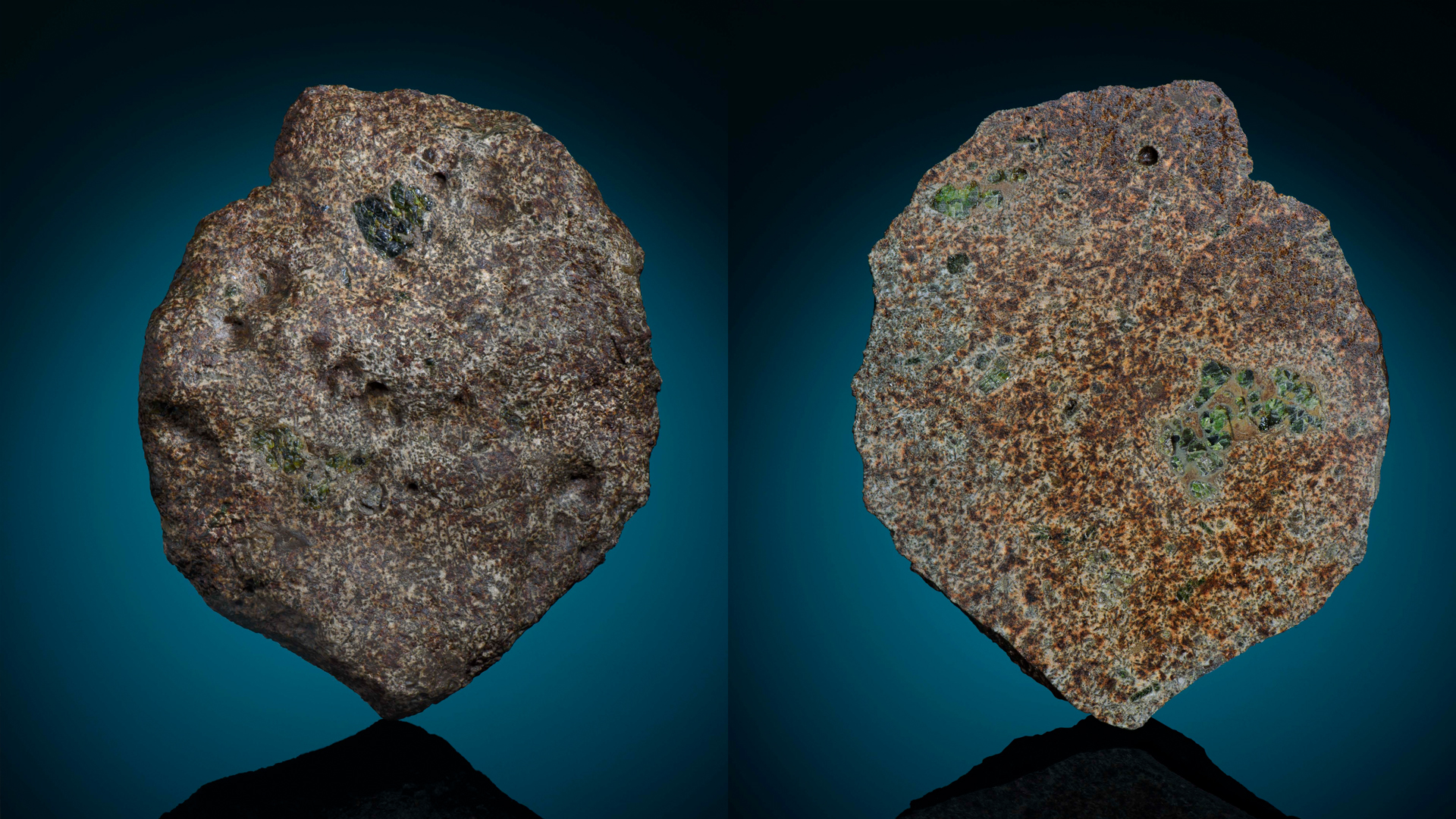4.6-billion-year-old meteorite belongs to Earth’s long-lost baby cousin
A protoplanet in the early solar system spawned a unique type of meteorite.

A lonely meteorite that landed in the Sahara Desert in 2020 is older than Earth. The primeval space rock is about 4.6 billion years old, and is the oldest known example of magma from space.
Its age and mineral content hint that the rock originated in our early solar system from the crust of a protoplanet — a large, rocky body in the process of developing into a planet, according to a new study.
The meteorite, called Erg Chech 002 (EC 002), is likely a rare surviving chunk of a lost baby planet that was destroyed or absorbed by bigger rocky planets during our solar system's formation.
Related: Space-y tales: The 5 strangest meteorites
Pieces of EC 002 were found in Adrar, Algeria, in May 2020, and the fragments were "relatively coarse grained, tan and beige," sporadically studded with crystals that were "larger green, yellow-green and less commonly yellow-brown," according to a description by the Lunar and Planetary Institute (LPI).
EC 002 is an achondrite, a type of meteorite that comes from a parent body with a distinct crust and core, and lacks round mineral grains called chondrules, according to the Center for Meteorite Studies at Arizona State University.
Approximately 3,100 known meteorites originated in crust and mantle layers of rocky asteroids, but they reveal little about protoplanet diversity when our solar system was young. About 95% come from just two parent bodies, and around 75% of those originated from one source — possibly the asteroid 4 Vesta, one of the largest objects in the asteroid belt, the researchers reported.
Sign up for the Live Science daily newsletter now
Get the world’s most fascinating discoveries delivered straight to your inbox.

A meteoritic rarity
Among the thousands of rocky meteorites, EC 002 stood out. Radioactive versions, or isotopes, of aluminum and magnesium indicated that the meteorite's parent was an ancient body dating to 4.566 billion years ago, and EC 002's chemical composition revealed that it emerged from a partly-melted magma reservoir in the parent body's crust. Most rocky meteorites come from sources with basaltic crusts — rapidly cooled lava that is rich in iron and magnesium — but EC 002's composition showed that its parent's crust was made of andesite, which is rich in silica.
"This meteorite is the oldest magmatic rock analyzed to date and sheds light on the formation of the primordial crusts that covered the oldest protoplanets," the study authors reported.
While EC 002 is highly unusual, other studies have found that such silica-infused andesite crusts were likely common during our solar system's protoplanet-forming stage, "contrary to what the meteorite record suggests," the researchers wrote.
"It is reasonable to assume that many similar chondritic bodies accreted at the same time and were capped by the same type of primordial crust," the study authors said. Yet, when the scientists peered at distant cosmic objects' spectral "fingerprints" — wavelength patterns in the light they emit or reflect — and compared them to EC 002, they found no matches. Even after comparison with 10,000 objects in the Sloan Digital Sky Survey database, EC 002 was "clearly distinguishable from all asteroid groups," the scientists reported. "No object with spectral characteristics similar to EC 002 has been identified to date."
Where are all the protoplanets with andesite crusts today? During our solar system's volatile period of planetary birth, most of these protoplanets likely didn't make it past infancy, according to the study. Either they were smashed to bits in collisions with other rocky bodies, or they were absorbed by bigger and more successful rocky planets, such as Earth, Mars, Venus and Mercury, leaving few traces behind to spawn meteorites such as EC 002.
"Remains of primordial andesitic crust are therefore not only rare in the meteorite record, but they are also rare today in the asteroid belt," the scientists wrote.
The findings were published online March 8 in the journal Proceedings of the National Academy of Sciences.
Originally published on Live Science.

Mindy Weisberger is an editor at Scholastic and a former Live Science channel editor and senior writer. She has reported on general science, covering climate change, paleontology, biology and space. Mindy studied film at Columbia University; prior to Live Science she produced, wrote and directed media for the American Museum of Natural History in New York City. Her videos about dinosaurs, astrophysics, biodiversity and evolution appear in museums and science centers worldwide, earning awards such as the CINE Golden Eagle and the Communicator Award of Excellence. Her writing has also appeared in Scientific American, The Washington Post and How It Works Magazine. Her book "Rise of the Zombie Bugs: The Surprising Science of Parasitic Mind Control" will be published in spring 2025 by Johns Hopkins University Press.










